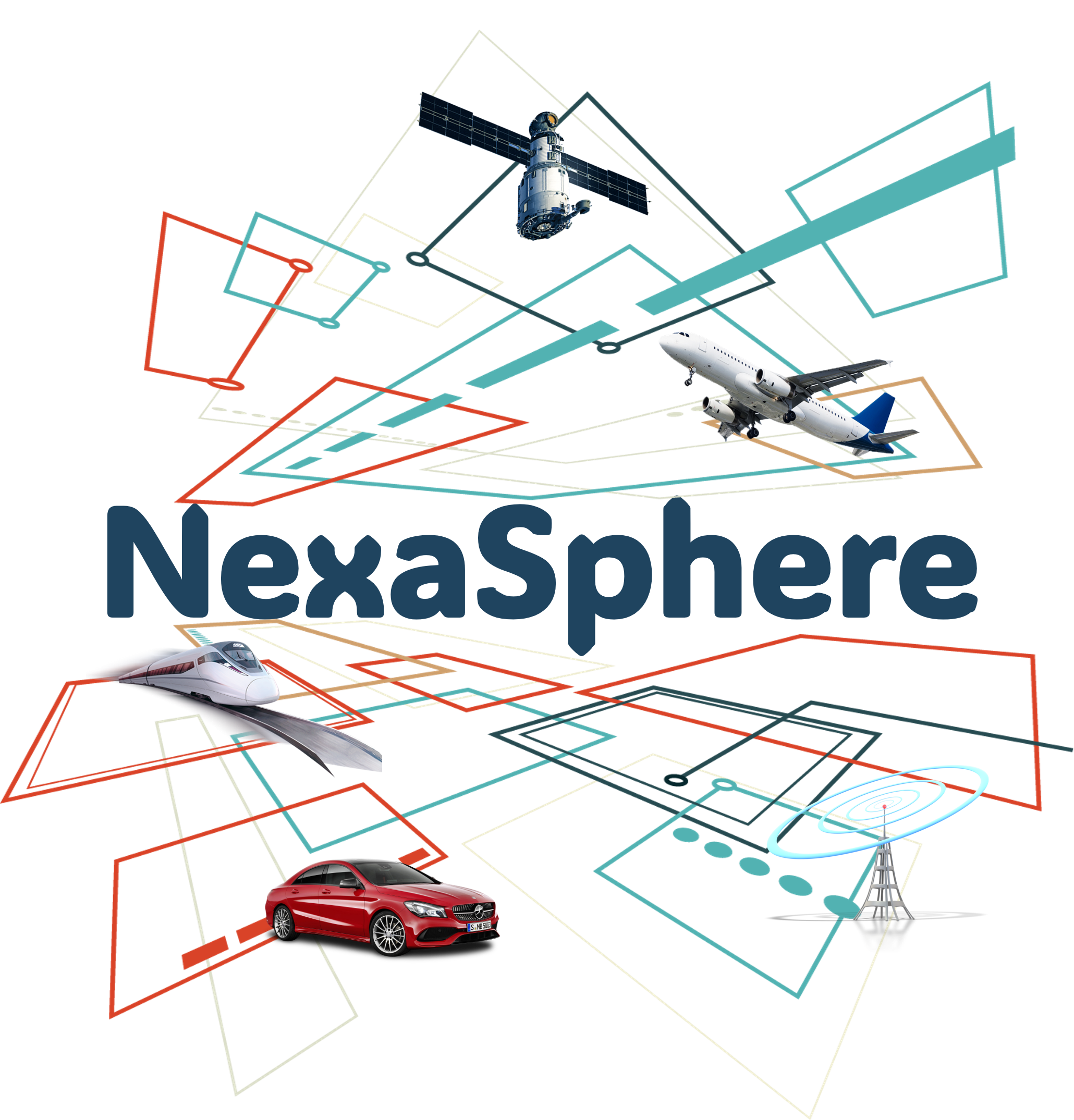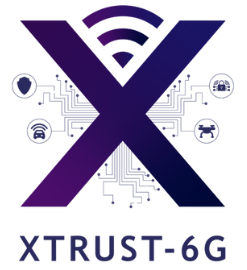- ERICSSON FRANCE, FR
- FRAUNHOFER GESELLSCHAFT ZUR FORDERUNG DER ANGEWANDTEN FORSCHUNG EV, DE
- TELEFONICA INNOVACION DIGITAL SL, ES
- ISRD SP Z O.O., PL
- SEQUANS COMMUNICATIONS SA, FR
- APPLE TECHNOLOGY ENGINEERING BV & CO KG, DE
- KATHOLIEKE UNIVERSITEIT LEUVEN, BE
- CONSORZIO NAZIONALE INTERUNIVERSITARIO PER LE TELECOMUNICAZIONI, IT
- UNIVERSITA DI PISA, IT
Wireless Communication Technologies
Call 3 Stream B: This stream is divided in 8 sub-sections for a total of 12 projects: FLECON-6G, UNITY-6G, 6G-LEADER, MultiX, AMAZING-6G, NexaSphere, MARE, XTRUST-6G, 6G-MIRAI, 6GARROW, SUSTAIN-6G, 6G-DALI
B-01-01: System Architecture
Project Mission
FLECON-6G gathers key participants from Phase-1 and Phase-2 SNS JU projects, aiming to make the “Intelligent 6G Network of Networks” vision a reality, with Trustworthiness and Generalisability of Native AI and Network Digital Twins (NDT) assisted approaches. It aims to deliver key technological assets in the form of collaborative and distributed frameworks offering scalability and support for multi-domain, multi-stakeholder infrastructures, jointly with network infrastructure programmability that supports the offloading of network application logic.
FLECON-6G provides groundbreaking research to drive the next phase of 6G Native AI research, addressing Trustworthiness and Generalizability via novel intent-driven frameworks and robust Foundation Models, that not only deliver zero-touch orchestration but also performance guarantees and robustness in multi-stakeholder infrastructures. A multi-layer, multi-vendor NDT framework will also assist online decisions and resolve conflicts among multiple closed control loops operating in reactive, proactive or predictive modes for zero-touch self-optimisation. At the business layer, a Smart Marketplace will facilitate the creation of a wide, sustainable ecosystem of highly diversified stakeholders, through which, MNOs, digital service providers, verticals and software developers of AI or DT software applications will jointly collaborate to build more integrated and intent-driven service offers, composing a plethora of modular assets for their effective monetisation.
In line with EU’s policies, FLECON-6G will design, develop and validate through relevant PoCs, several secure, trustworthy, resilient and reliable solutions across 4 heterogeneous verticals that require 6G performance capabilities. FLECON-6G will strongly impact standardisation, with significant contributions to 3GPP, ITU, ETSI, GSMA, O-RAN and open-source communities.
Contact Details
Website: https://www.flecon6g.eu/ Social Media: ![]()
![]()
![]()
Project Coordinator: Christos Verikoukis, ISI/ATH
Contribution to SNS Journal 2025
Participants
- ATHINA-EREVNITIKO KENTRO KAINOTOMIAS STIS TECHNOLOGIES TIS PLIROFORIAS, TON EPIKOINONION KAI TIS GNOSIS, EL
- EURECOM GIE, FR
- CONSORZIO NAZIONALE INTERUNIVERSITARIO PER LE TELECOMUNICAZIONI, IT
- TECHNISCHE UNIVERSITEIT DELFT, NL
- UCLAN CYPRUS LIMITED, CY
- EBOS TECHNOLOGIES LIMITED, CY
- IQUADRAT INFORMATICA SL, ES
- NEXTWORKS, IT
- BRAINSTORM MULTIMEDIA SL, ES
- E-LIGHTHOUSE NETWORK SOLUTIONS SL, ES
- REALWORLD EASTERN EUROPE SRL, RO
- AIRBUS DS SLC, FR
- L.M. ERICSSON LIMITED, IE
- LENOVO DEUTSCHLAND GMBH, DE
- NVIDIA DENMARK APS, DK
- SIEMENS AKTIENGESELLSCHAFT, DE
- ORANGE ROMANIA SA, RO
- ORGANISMOS TILEPIKOINONION TIS ELLADOS OTE AE, EL
- TELEFONICA INNOVACION DIGITAL SL, ES
Project Mission
UNITY-6G aims to create a highly sustainable and scalable integrated AI-native architecture that can support the diverse requirements of 6G networks by relying on advanced technologies, such as distributed ledger technology, semantic communications, digital network twinning to enhance the performance, cost-efficiency and trustworthiness of integrated 6G network services and applications. The focus is on scalability and sustainability for integrated networks (Non-Terrestrial and Terrestrial Networks, xHaul, Open RAN, Non-Public Networks, Edge, Core and Cloud).
Furthermore, UNITY-6G aims to evolve to real-time distributed and network state-aware Open RAN that can leverage the integration of distributed applications in the integrated architecture. This will enable fine-grained data-driven management and control via incorporating dApps, distributed applications that complement existing xApps/rApps and use cases with stricter timing requirements in an integrated network. Common interfaces and protocols will be defined so that different heterogeneous domains can communicate seamlessly. To better guide the design, UNITY-6G will use the principles of service-based architecture for integrated networks and leverage digital twins for network evaluation.
UNITY-6G considers four use cases targeting: i) Sustainable networks for disaster handling, (ii) Immersive Experience with Real-time XR/holographic communications, (iii) Digital Twin for Integrated 6G Network Evaluation, (iv) Multi-RAT O-RAN enabled NPN for supporting time-sensitive applications for Industry 4.0.
Contact Details
Website: https://unity-6g.eu/ Social Media: ![]()
Project Coordinator: Engin Zeydan, CTTC
Contribution to SNS Journal 2025
Participants
- CENTRE TECNOLOGIC DE TELECOMUNICACIONS DE CATALUNYA, ES
- TELEFONICA INNOVACION DIGITAL SL, ES
- KEYSIGHT TECHNOLOGIES DENMARK APS, DK
- ORANGE SA, FR
- NOKIA SOLUTIONS AND NETWORKS GMBH &CO KG, DE
- SOFTWARE RADIO SYSTEMS LIMITED, IE
- INDEPENDENT POWER TRANSMISSION OPERATOR SA, EL
- Rimedo SPOLKA Z OGRANICZONA ODPOWIEDZIALNOSCIA, PL
- CERAGON NETWORKS S.R.L, RO
- HISPASAT SA, ES
- NEARBY COMPUTING SL, ES
- HOLO-INDUSTRIE 4.0 SOFTWARE GMBH, DE
- ALMA MATER STUDIORUM – UNIVERSITA DI BOLOGNA, IT
- DEUTSCHES ZENTRUM FUR LUFT – UND RAUMFAHRT EV, DE
- FOUR DOT INFINITY INFORMATION AND TELECOMMUNICATIONS SOLUTIONS PRIVATE COMPANY, EL
- INTERUNIVERSITAIR MICRO-ELECTRONICA CENTRUM, BE
- FONDAZIONE LINKS – LEADING INNOVATION & KNOWLEDGE FOR SOCIETY, IT
- NATIONAL CENTER FOR SCIENTIFIC RESEARCH “DEMOKRITOS”, EL
- MARTEL GMBH, CH
- HAUTE ECOLE SPECIALISEE DE SUISSE OCCIDENTALE, CH
B-01-02: Wireless Communication Technologies and Signal Processing
Project Mission
6G-LEADER aims at evolving the PHY and RAN aspects of 6G communication networks by relying on the following pillars:
- ML-empowered PHY algorithms with predictive capabilities towards fully autonomous operation;
- Full-duplex transceivers employing novel sparse antenna arrays and advanced digital self-interference cancellation;
- Non-orthogonal and random multiple access schemes to accommodate mass connectivity demands of users and machines;
- Goal-oriented semantic communications;
- Open and disaggregated RAN implementation with xApps integrating the advancements, achieved during the project’s lifetime.
Contact Details
Website: https://6g-leader.eu/ Social Media: ![]()
Project Coordinator: Ana Luisa Alves, F6S Network Ireland
Contribution to SNS Journal 2025
Participants
- F6S NETWORK IRELAND LIMITED, IE
- UNIVERSITY OF CYPRUS, CY
- FOUR DOT INFINITY INFORMATION AND TELECOMMUNICATIONS SOLUTIONS PRIVATE COMPANY, EL
- AALTO KORKEAKOULUSAATIO SR, FI
- UNIVERSITAT POLITECNICA DE CATALUNYA, ES
- ATOS IT SOLUTIONS AND SERVICES IBERIA SL, ES
- LINKOPINGS UNIVERSITET, SE
- ACCELLERAN, BE
- UNIVERSIDAD DE GRANADA, ES
- SOFTWARE RADIO SYSTEMS LIMITED, IE
- EREVNITIKO PANEPISTIMIAKO INSTITOUTO SYSTIMATON EPIKOINONION KAI YPOLOGISTON, EL
- DIGITAL CATAPULT, UK
- SAMSUNG ELECTRONICS (UK) LIMITED, UK
- NOKIA UK LIMITED, UK
- CONSORZIO NAZIONALE INTERUNIVERSITARIO PER LE TELECOMUNICAZIONI, IT
- Massive Beams GmbH, DE
- UNIVERSIDAD CARLOS III DE MADRID, ES
- TELEFONICA SA, ES
Project Mission
The MultiX project aims to revolutionize the 3GPP Radio Access Network (RAN) design and operation by developing a pioneering MultiX fusion Perceptive 6G-RAN system (MP6R) that will support an integrated multisensor, multi-static, multi-band, and multi-technology paradigm to enable multi-sensorial perception for future 6G sensing applications.
The MP6R builds on top of three innovation pillars:
i) MultiX Perception System (MPS) that introduces 3 levels of sensing functions into the RAN stack to support multi-sensor, multi-band, multi-static, and multi-technology Integrated Sensing and Communication (ISAC), following a streamlined functional split architecture to enable a fully flexible ISAC deployment in 6G-RAN and to facilitate vendors to extend their RAN stack to support sensing in a plug & play manner;
ii) MP6R controller (MP6RC) that extends the RAN control plane functionalities to coordinate and control multi-technology integration (including 3GPP, non-3GPP, and other sensor technologies such as Radar, LiDAR, camera, etc.), while considering new connectivity approaches as well as mobility challenges for sensing and localization services; and
iii) Data Access and Security Hub (DASH) designed as a novel RAN data plane entity that aggregates multi-sensor data of diverse technologies, providing secure data access, processing, storage, and exposure, ensuring data privacy and trustworthiness, and that can be fully distributed throughout the data plane wherever needed in the 6G-RAN.
The proposed MP6R RAN design, and a set of other selected innovations, will be validated and demonstrated in two specific Proof-of-Concepts (PoCs) targeting TRL 4-5: PoC#1) Multi-layer Network Digital Twin for Industrial Manufacturing and PoC#2) Contact-free eHealth Monitoring at Home Environment. In addition, MultiX also aims to shape 6G standardization for achieving maximum sustainability and impact by contributing to relevant SDOs, including 3GPP, IEEE, ETSI & ISAC.
Contact Details
Website: https://multix-6g.eu/ Social Media: ![]()
![]()
![]()
Project Coordinator: Antonia de la Olivia, University Carlos III de Madrid
Contribution to SNS Journal 2025
Participants
- UNIVERSIDAD CARLOS III DE MADRID, ES
- APPLE TECHNOLOGY ENGINEERING BV & CO KG, DE
- ORGANISMOS TILEPIKOINONION TIS ELLADOS OTE AE, EL
- INTEL DEUTSCHLAND GMBH, DE
- INTERDIGITAL EUROPE LTD, UK
- NEC LABORATORIES EUROPE GMBH, DE
- SIEMENS AKTIENGESELLSCHAFT, DE
- TELEFONICA SA, ES
- BUBBLERAN, FR
- NEXTWORKS, IT
- CONSORZIO NAZIONALE INTERUNIVERSITARIO PER LE TELECOMUNICAZIONI, IT
- FUNDACIO PRIVADA I2CAT, INTERNET I INNOVACIO DIGITAL A CATALUNYA, ES
- FUNDACION IMDEA NETWORKS, ES
- IHP GMBH – LEIBNIZ INSTITUTE FOR HIGH PERFORMANCE MICROELECTRONICS, DE
- INSTITUTE OF ACCELERATING SYSTEMS AND APPLICATIONS, EL
- KATHOLIEKE UNIVERSITEIT LEUVEN, BE
- UNIVERSIDAD DE CANTABRIA, ES
- NEC ITALIA SPA, IT
B-01-03: Communication Infrastructure Technologies and Devices
Project Mission
Internet of Things (IoT) technology is widely recognised as having the potential to tackle some of the world’s biggest challenges. However, to truly benefit society and enable a sustainable future, IoT innovations will need to address the technology gap that exists in powering the rising number of IoT devices. Specifically, the AMBIENT-6G consortium argues that it will be impossible to power hundreds of billions of future IoT devices with batteries that need to be replaced or recharged manually. The maintenance costs, environmental impact, and safety hazards will just be too high. Instead, AMBIENT-6G proposes a new class of energy-neutral devices (ENDs) that will be connected to the IoT through novel ultra-low-power 6G technologies. ENDs exploit ambient energy harvesting or wireless power transfer to recharge their storage and power their operations, allowing them to achieve decades-long energy autonomy.
The overall objective of AMBIENT-6G is to design, prototype, validate, and standardize hard- and software technology solutions for intelligent ENDs, and the 6G network infrastructure that connects them to the Internet. To achieve this objective, the project will provide technological innovations in terms of
(i) END hardware and software components to enable energy harvesting and management, as well as backscatter and active wireless communications,
(ii) a new 6G low-power wide area network technology with significantly lower energy consumption than current technologies, and
(iii) machine learning both on-device and orchestrated along the Cloud-Edge-Device continuum to support intelligent management of the device and network resources, as well as local application data processing.
AMBIENT-6G will maximize the impact of the above innovations by actively participating in 3GPP Ambient-IoT and other related standardization activities and adopting an open science approach that facilitates further integration of the AMBIENT-6G technology in follow-up research.
Contact Details
Website: https://www.ambient-6g.eu/ Social Media: ![]()
Project Coordinator: Jeroen Famaey, imec
Contribution to SNS Journal 2025
Participants
- INTERUNIVERSITAIR MICRO-ELECTRONICA CENTRUM, BE
- AALTO KORKEAKOULUSAATIO SR, FI
- OULUN YLIOPISTO, FI
- OY L M ERICSSON AB, FI
- SEQUANS COMMUNICATIONS SA, FR
- WINGS ICT SOLUTIONS TECHNOLOGIES PLIROFORIKIS KAI EPIKOINONION ANONYMI ETAIREIA, EL
- KATHOLIEKE UNIVERSITEIT LEUVEN, BE
- QUICKSAND, BE
- NXP SEMICONDUCTORS AUSTRIA GMBH & CO KG, AT
- TECHNISCHE UNIVERSITAET GRAZ, AT
- TELEFONICA SA, ES
Project Mission
The vision of NexaSphere is to create a system capable of facilitating a 3D network of networks. This framework seamlessly integrates multi-path transmission to enhance multi-connectivity in an energy-saving manner, bringing together spaceborne and airborne platforms with terrestrial infrastructure. The main goal is to deliver societal benefits to the future European landscape, with a particular focus on mobile transportation (including air mobility, railway, and automotive sectors), smart cities, and communities beyond the year 2030.
NexaSphere’s primary objective is to conceptualize and develop advanced hardware prototypes and software algorithms for a sustainable multi-connected 3D network. This network will integrate radio and wireless-optical technologies, and enable network orchestration through AI-driven programmability.
Additionally, NexaSphere aims to extend the edge-cloud continuum into space, creating a Radio & Wireless-Optical Connectivity Continuum from short-range to long-range. By integrating scalable simulation models in a hardware-in-the-loop approach and conducting in-lab and relevant environment validation, NexaSphere seeks to demonstrate proof-of-concept for this TN/NTN unified network architecture, targeting a Technology Readiness Level (TRL) of 4-5. These demonstrations will showcase the benefits of the proposed architecture, particularly within the mobile transportation sector, covering aeronautics, railway, and automotive industries.
Contact Details
Website: https://nexasphere.eu/ Social Media: ![]()
![]()
![]()
Project Coordinator: Babak Mafakheri, Safran Passenger Innovations
Contribution to SNS Journal 2025
Participants
- SAFRAN PASSENGER INNOVATIONS GERMANY GMBH, DE
- DEUTSCHES ZENTRUM FUR LUFT – UND RAUMFAHRT EV, DE
- aeroLiFi GmbH, DE
- CONSERVATOIRE NATIONAL DES ARTS ET METIERS, FR
- SOFTWARE RADIO SYSTEMS LIMITED, IE
- EIGHT BELLS LTD, CY
- HEWLETT PACKARD ITALIANA SRL, IT
- ROMARS SRL START-UP COSTITUITA A NORMA DELL’ART 4 COMMA 10BIS DEL DECRETO LEGGE 24 GENNAIO 2015, N.3, IT
- STELLANTIS EUROPE SPA, IT
- RF MICROTECH SRL, IT
- CONSORZIO NAZIONALE INTERUNIVERSITARIO PER LE TELECOMUNICAZIONI, IT
- TECHNISCHE UNIVERSITAET WIEN, AT
- MAGISTER SOLUTIONS OY, FI
- ORGANISMOS TILEPIKOINONION TIS ELLADOS OTE AE, EL
- NETWORK RAIL INFRASTRUCTURE LIMITED, UK
- OHB SYSTEM AG, DE
- ELLAS SAT ANONYMH ETAIREIA YPIRESIES DORYFORIKON SYSTIMATON KAI EPIKOINONION, EL
- UNIVERSITA DEGLI STUDI DI NAPOLI FEDERICO II, IT
B-01-04: Reliable Services and Smart Security
Project Mission
The evolution towards 6G communications brings forth new security and privacy challenges, including, but not, limited to protecting sensitive user data, securing ultra-low latency communication, safeguarding against emerging cyber threats, and ensuring the integrity of the network infrastructure.
MARE will contribute to create a reliable 6G services provisioning platform through the definition of a novel security plane built on a well-defined set of open and programmable security functions, delivered as enablers to the 6G architecture, offering transparent, multi-domain/ stakeholder security and privacy provisioning, aimed at proactively proposing and assessing candidate strategies to automatically handle attacks and threats in 6G networks.
More specifically, MARE innovations pivot on two main contributions:
1. A set of enriched security functions built upon basic primitives, referred to as DOTs, that are composed of programmable security services to maximize security guarantees (Security Plane).
2. A smart “pre-assessment” environment, including simulation, emulation (with NDT) and real infrastructure for systems, users, etc., where security-related services and functions are analyzed.
In addition to optimising the scope and coverage of its security enablers, MARE will study and implement a systematic Attacks Modelling Reference Framework for the identification and categorization of the evolving 6G ecosystem threat landscape.
The project will demonstrate and validate the efficiency of its novel security plane in 11 PoC setups, corresponding to different 6G threats and security challenges. The MARE solution will be built on -and will be totally compliant with- the architectural concepts for 6G, as defined by European and International initiatives, such as the Hexa-X I/II flagship projects.
Contact Details
Website: https://mare6g.eu/ Social Media: ![]()
![]()
![]()
Project Coordinator: Andreas Zalonis, Space Hellas
Contribution to SNS Journal 2025
Participants
- SPACE HELLAS ANONYMI ETAIREIA SYSTIMATA KAI YPIRESIES TILEPIKOINONIONPLIROFORIKIS ASFALEIAS – IDIOTIKI EPICHEIRISI PAROCHIS YPERISION ASFA, EL
- TELEFONICA INNOVACION DIGITAL SL, ES
- ATOS IT SOLUTIONS AND SERVICES IBERIA SL, ES
- ERICSSON TELECOMUNICAZIONI SPA, IT
- THALES SIX GTS FRANCE SAS, FR
- HEWLETT PACKARD ITALIANA SRL, IT
- ORANGE SA, FR
- AIRBUS DEFENCE AND SPACE SAS, FR
- NATIONAL CENTER FOR SCIENTIFIC RESEARCH “DEMOKRITOS”, EL
- TECHNISCHE UNIVERSITAET BRAUNSCHWEIG, DE
- UNIVERSITAT POLITECNICA DE CATALUNYA, ES
- CONSORZIO NAZIONALE INTERUNIVERSITARIO PER LE TELECOMUNICAZIONI, IT
- UNIVERSITY COLLEGE DUBLIN, NATIONAL UNIVERSITY OF IRELAND, DUBLIN, IE
- NEXTWORKS, IT
- FOUR DOT INFINITY INFORMATION AND TELECOMMUNICATIONS SOLUTIONS PRIVATE COMPANY, EL
- XLAB RAZVOJ PROGRAMSKE OPREME IN SVETOVANJE DOO, SI
- ACCELLERAN, BE
- EIGHT BELLS LTD, CY
- GIOUMPITEK MELETI SCHEDIASMOS YLOPOIISI KAI POLISI ERGON PLIROFORIKIS ETAIREIA PERIORISMENIS EFTHYNIS, EL
Project Mission
The project aims to establish a robust security framework for 6G ecosystems, underpinned by the zero-trust principle and emphasizing core tenets like resilience, privacy, and dependability. Dynamic access control via a context-aware risk-based policy engine, leveraging rich cyber-threat intelligence and behavioral insights gathered from the 6G infrastructure, is at the core of the proposed approach. Micro-segmentation of vulnerable virtualized functions from critical O-RAN assets is a primary goal to prevent attackers’ lateral movement capabilities and minimize damage.
Proactive security measures, will be deployed alongside sophisticated AI tools to optimize attack surface reduction and enhance intrusion detection capabilities. An intelligent extended detection and response solution will be developed, covering all layers of a 6G network; this entails the integration of collaborative intrusion detection networks and graph-based threat models, facilitating real-time and optimal responses to sophisticated multi-stage attacks targeting the 6G ecosystem.
Automation will be pivotal in various aspects, including threat modeling, and response orchestration, aided by blockchain to secure integration and lifecycle management of 6G applications. Moreover, the project will prioritize supply chain security by implementing automated vulnerability scanning and introducing O-RAN application certification. Quantum-safe technologies (QKD and PQC) and AI-driven solutions will be employed to safeguard against physical layer attacks, ensuring uninterrupted and secure data transmission in 6G networks.
Additionally, privacy-preserving and trusted AI/ML schemes will be developed upholding principles like fairness, explainability, and sustainability to ensure high energy efficiency and minimal environmental footprint of the proposed solutions. These efforts aim to ensure that critical 6G communications infrastructure achieves high security and resilience of against evolving cyber-threats.
Contact Details
Website: https://xtrust-6g.eu/ Social Media: ![]()
![]()
![]()
Project Coordinator: Stefanos Vrohidis, CERTH-ITI
Contribution to SNS Journal 2025
Participants
- ETHNIKO KENTRO EREVNAS KAI TECHNOLOGIKIS ANAPTYXIS, EL
- UNIVERSITY OF PORTSMOUTH HIGHER EDUCATION CORPORATION, UK
- EUROPEAN DYNAMICS LUXEMBOURG SA, LU
- UNIVERSITY OF PELOPONNESE, EL
- K3Y, BG
- ADDITESS ADVANCED INTEGRATED TECHNOLOGY SOLUTIONS & SERVICES LTD, CY
- INCITES CONSULTING SA, LU
- ARCHI PROSTASIAS DEDOMENON PROSOPIKOU CHARAKTIRA, EL
- Summit TEC Group LTD, CY
- PANEPISTIMIO THESSALIAS, EL
- UNIVERSITE DU LUXEMBOURG, LU
- ERICSSON TELECOMUNICAZIONI SPA, IT
- TALLINNA TEHNIKAÜLIKOOL, EE
- DIMOSIA EPICHEIRISI ILEKTRISMOU ANONYMI ETAIREIA, EL
- IQUADRAT INFORMATICA SL, ES
- TELEFONICA INNOVACION DIGITAL SL, ES
- CYENTIFIC AS, NO
- TELEKOM SLOVENIJE DD, SI
- EUROPEAN DYNAMICS ADVANCED INFORMATION TECHNOLOGY AND TELECOMMUNICATION SYSTEMS SA, EL
- SPHYNX TECHNOLOGY SOLUTIONS AG, CH
B-01-05: International Collaboration EU-JP
Project Mission
6G-Machine Intelligence based Radio Access Infrastructure (6G-MIRAI) aims at developing reliable and robust AI-native wireless communication systems that enable the practical exploitation of the full potential of the latest physical layer technological advances, especially cell-free massive MIMO, and of next-generation virtualized and potentially disaggregated radio access networks (RANs). To achieve this goal, 6G-MIRAI will rely on extensive know-how from established industry players and academic partners from both the EU and Japan.
The overall goal of 6G-MIRAI is deconstructed into four main objectives:
(O1) Reliable and robust AI-ML techniques for future wireless communications;
(O2) Practical AI-native design of next-generation radio access networks;
(O3) Common EU-JP platform for data, benchmarking, and validation; and
(O4) Aligned EU-JP strategy on future standardisation efforts.
These objectives align with the EU HORIZON-JU-SNS-2024-STREAM-B-01-05 call requirements, focusing on the evolution of Radio Access Networks (RAN) for 6G to pave the way for future advancements towards AI-native radio access networks. All four objectives will contribute to aligning views on the radio interface and RAN concepts between the EU and Japan, and between main industry and academic institutions in the EU.
6G-MIRAI objectives will be achieved through five interconnected research and technology items:
(RTI1) Realistic channel and hardware models to enable the AI-native air interface;
(RTI2) Practical AI-based physical layer designs;
(RTI3) Scalable AI-based network coordination;
(RTI4) Evolved AI-ready architecture designs; and
(RTI5) AI-oriented data management, testing, and proof-of-concept.
These RTIs will enrich the technological portfolio of all involved partners and the 6G ecosystem since they will have a direct impact on standardisation, IP generation, and scientific publications.
Contact Details
Website: https://6g-mirai-harmony.eu/ Social Media: ![]()
![]()
Project Coordinator: Tobias Ley, Ericsson Research
Contribution to SNS Journal 2025
Participants
B-01-06: International Collaboration EU – ROK
Project Mission
This SNS international project fosters collaboration between the European Union (EU) and the Republic of Korea (ROK). AI-native radio access networks and integrated device-network approaches represent a paradigm shift in the field of wireless communication, offering unprecedented opportunities for innovation and optimization. By leveraging artificial intelligence (AI) technologies at the heart of radio access networks (RAN) and integrating devices seamlessly into network architectures, we can unlock new levels of efficiency, flexibility, and performance. Traditional approaches to wireless communication are often limited by static configurations and manual interventions, leading to suboptimal resource utilization and scalability challenges. In contrast, AI-native RAN and integrated device-network approaches empower networks to adapt dynamically to changing conditions, optimize resource allocation in real time, and autonomously respond to diverse user demands and environmental factors. This transformative approach not only enhances the user experience by delivering higher throughput, lower latency, and improved reliability but also lays the foundation for realizing a diverse range of innovative services, including spatio-temporal, critical, compute-AI, omnipresent IoT, immersive communications, and global broadband services.
Moreover, by fostering interoperability and collaboration between devices and networks, these approaches pave the way for seamless connectivity across heterogeneous environments, driving innovation and fostering new business models in the era of 6G and beyond. The project builds on the foundations of established EU-Korea research collaboration including 5G-CHAMPION project that demonstrated 5G technology in the 2018 Winter Olympics in PyeongChan, PriMO-5G project that demonstrated end-to-end 5G system providing immersive video services for moving objects and 5G-ALLSTAR project that showcased smooth 5G terrestrial and satellite integration.
Contact Details
Website: https://6garrow.com/ Social Media: ![]()
![]()
![]()
Project Coordinator: Emilio Calvanese Strinati, CEA-Leti & Seong-Lyun Kim, Yonsei University
Contribution to SNS Journal 2025
Participants
- COMMISSARIAT A L ENERGIE ATOMIQUE ET AUX ENERGIES ALTERNATIVES, FR
- FRAUNHOFER GESELLSCHAFT ZUR FORDERUNG DER ANGEWANDTEN FORSCHUNG EV, DE
- AALTO KORKEAKOULUSAATIO SR, FI
- OULUN YLIOPISTO, FI
- INTEL DEUTSCHLAND GMBH, DE
- HEWLETT PACKARD ITALIANA SRL, IT
- ETABLISSEMENT D’ENSEIGNEMENT SUPERIEUR CONSULAIRE GRENOBLE ECOLE DE MANAGEMENT, FR
- ORANGE SA, FR
B-01-07: Sustainability Lighthouse
Project Mission
SUSTAIN-6G will develop a holistic sustainability framework in the context of 6G, addressing all three sustainability areas (environmental, societal, economic), and factors impacting sustainable 6G technology and 6G technology for improving verticals’ sustainability. The framework will be applied to key vertical sectors, in an end-to-end manner, considering the full lifecycle of assets.
SUSTAIN-6G will identify the cross-points between what sustainability needs are, which challenges 6G and verticals need to consider, what 6G should do to address these challenges, and how society and economy benefit from responsible innovation. To achieve this, the project will provide a driving force for multiple activities and a hub, to integrate research and innovation from previous and ongoing projects, develop innovative concepts and solutions, and address gaps and trade-offs in technology, processes and methodologies.
The concepts and solutions will be validated and evaluated by proofs-of-concept on their sustainability impact and performance. The insights from these PoCs, and the proven processes and methodologies will be consolidated into guidelines, best practices and roadmaps to drive the full integration of sustainability aspects into future communication and vertical systems, in close collaboration with stakeholders and other SNS projects, and for use across the EU and beyond.
The outputs and impact of SUSTAIN-6G will provide the foundation for industry-wide standardisation that will enhance existing ecosystems, help to shape a sustainable future that develops and thrives within planetary boundaries, and strive to protect and restore the environment, while respecting EU values and rules. Recognising the complexity and multifaceted characteristics of sustainability, SUSTAIN-6G will achieve these objectives through its multidisciplinary consortium, composed of 6G and vertical technology, social science, and economic experts, and with relevant external stakeholders.
Contact Details
Website: https://sustain-6g.eu/ Social Media: ![]()
![]()
Project Coordinator: Christoph Schmelz, Nokia
Contribution to SNS Journal 2025
Participants
- NOKIA SOLUTIONS AND NETWORKS GMBH &CO KG, DE
- ORANGE SA, FR
- B-COM, FR
- COMMISSARIAT A L ENERGIE ATOMIQUE ET AUX ENERGIES ALTERNATIVES, FR
- CYBERSOCIAL LAB SRL IMPRESA SOCIALE, IT
- DEUTSCHE TELEKOM AG, DE
- ERICSSON AB, SE
- ELECTRICITE DE FRANCE, FR
- EURESCOM-EUROPEAN INSTITUTE FOR RESEARCH AND STRATEGIC STUDIES IN TELECOMMUNICATIONS GMBH, DE
- JOHN DEERE GMBH & CO. KG*JD, DE
- KATHOLIEKE UNIVERSITEIT LEUVEN, BE
- MDCREATE SRL, IT
- NOKIA NETWORKS FRANCE, FR
- OULUN YLIOPISTO, FI
- P-NET ANADYOMENA DIKTYA NEAS GENIAS & EFARMOGES IDIOTIKI KEFALAIOUCHIKI ETAIREIA, EL
- POLITECNICO DI TORINO, IT
- ARGOTEC SOLUCIONES INNOVADORAS EN TELECOMUNICACIONES SL, ES
- QUALTEK SRL, BE
- REAL WIRELESS LIMITED, UK
- SIEMENS AKTIENGESELLSCHAFT OESTERREICH, AT
- SIEMENS AKTIENGESELLSCHAFT, DE
- TELECOM ITALIA SPA, IT
- UNIVERSIDAD CARLOS III DE MADRID, ES
- WINGS ICT SOLUTIONS TECHNOLOGIES PLIROFORIKIS KAI EPIKOINONION ANONYMI ETAIREIA, EL
B-01-08: Reliable AI for 6G Communications Systems and Services
Project Mission
One of the key enablers of 6G is undoubtedly the Native support of AI/ML at all the system levels, components, and mechanisms, from the orchestration and management levels to the low-level optimization of the infrastructure resources, including Cloud, Edge, RAN, Core Network, as well as a transport network.
Despite the opportunities, several gaps hinder the adoption of AI/ML in 6G, such as the lack of extensive and high-quality datasets that are required to train the models. On the other hand, AI model testing and performance evaluation in a representative staging environment (by emulation or real deployment) is also challenging without access to an end-to-end 6G testbed or representative Digital Twin environment. To this end, 6G-DALI aims to deliver an end-to-end AI framework for 6G, structured in two interdependent pillars:
(1) AI experimentation as a service via MLOps and
(2) Data and analytics collection and storage via DataOps.
The 6G-DALI DataOps pillar provides the mechanisms for preparing clean and processed data that are stored within a 6G Dataspace and are made available for training and validating machine learning models as a service, a part of the MLOps Pillar. The end-to-end framework also delivers continuous monitoring, drift detection and retraining of models.
Finally, 6G-DALI will deliver open datasets, a 6G Dataspace for dataset storage and secure sharing, and a Digital Twin testbed for data generation on demand.
Contact Details
Website: https://6gdali.eu/ Social Media: ![]()
![]()
Project Coordinator: Sanna Tuomela, University of Oulu
Contribution to SNS Journal 2025
Participants
- ATHINA-EREVNITIKO KENTRO KAINOTOMIAS STIS TECHNOLOGIES TIS PLIROFORIAS, TON EPIKOINONION KAI TIS GNOSIS, EL
- INTRACOM SINGLE MEMBER SA TELECOM SOLUTIONS, EL
- IBM IRELAND LIMITED, IE
- VIAVI SOLUTIONS FRANCE SAS, FR
- EURECOM GIE, FR
- KATHOLIEKE UNIVERSITEIT LEUVEN, BE
- IQUADRAT INFORMATICA SL, ES
- SPARK WORKS LIMITED, IE
- NEXTWORKS, IT
- CYBERETHICS LAB SRLS, IT
- ORGANISMOS TILEPIKOINONION TIS ELLADOS OTE AE, EL
- TECHNISCHE UNIVERSITEIT DELFT, NL














